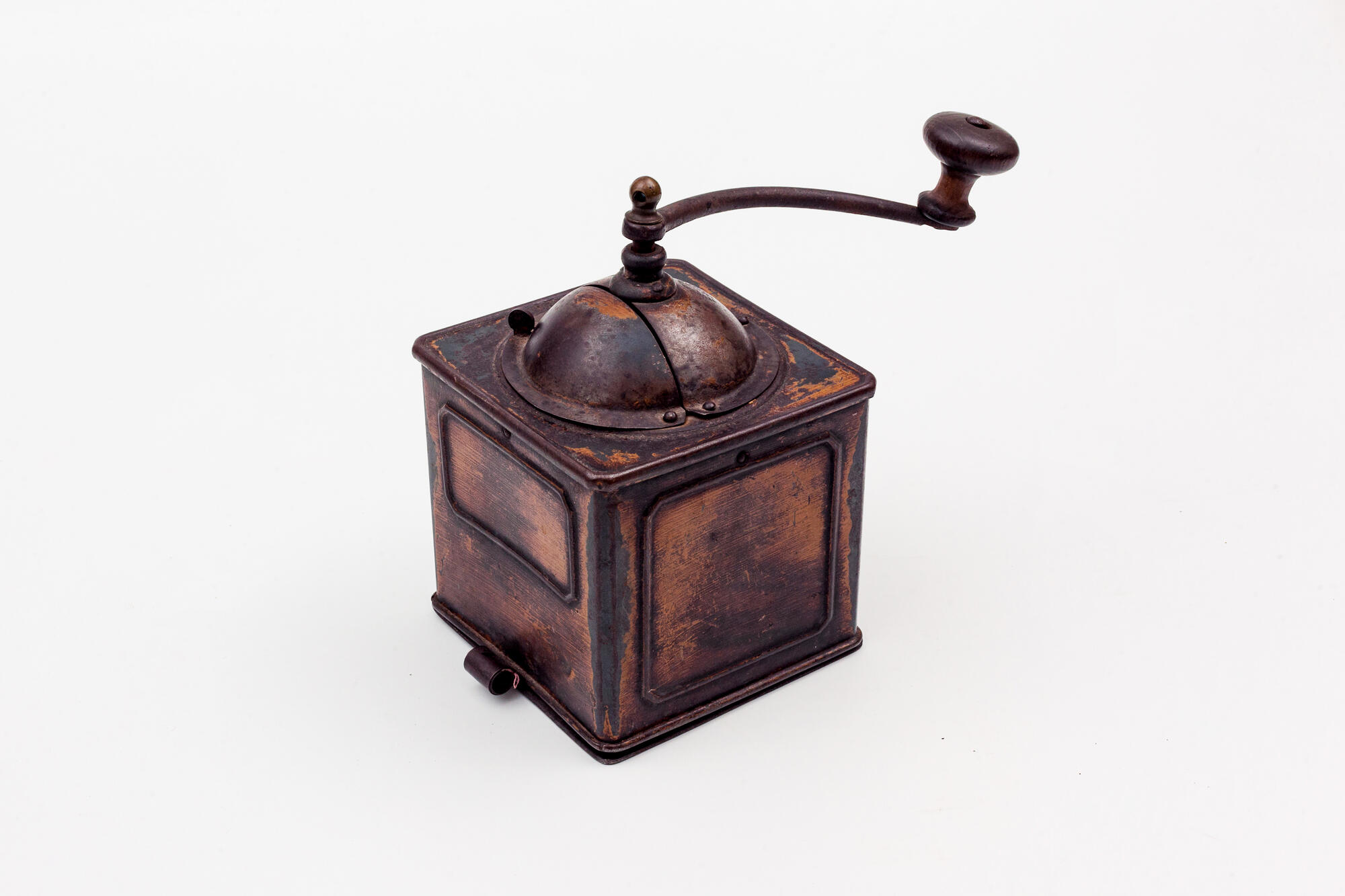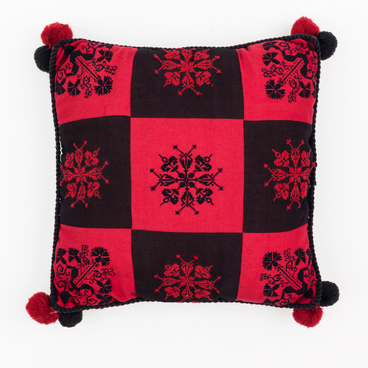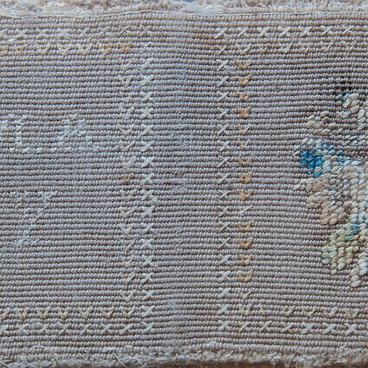An authentic coffee mill that belonged to Maria Ulyanova, the mother of the family, is in the winter kitchen.
In 2008, an exhibition was opened in this room for the 85th anniversary of the museum. Before that, the winter kitchen housed the museum’s collections and library, where the employees kept administrative documents. The exhibition was reconstructed according to the memories of Anna Ulianova-Elizarova, who gave a very accurate description of the room.
After Maria Ulyanova’s death, the mill was in the care of her daughter Anna, and then in the family of Dmitry Ulyanov — his eldest son Victor.
The Ulyanovs often used this antique mill. It has a rectangular body, painted with brown paint. On the upper surface, there is a round elevation and a handle with a wooden button. Two cone-shaped grindstones are hidden in the cap — in some grinders, the distance between them could be adjusted. One of the grindstones was set in motion with the help of a handle, while the other remained still. The grinded coffee powder was poured into a small wooden box underneath. Besides coffee, such mills could grind sugar, dry bread, and grain.
One of the sides of the product bears the trademark image of a lion and the inscription Peugeot Freres svos brevete deposts which translates as ‘Peugeot manufacturer with the French designation of the registered trademark deposts’. French coffee mills were very popular both in Europe and Russia, and Peugeot produced them from 1840 up to 1965.
In the second half of the 19th century, coffee became a fashionable beverage for the citizens of Simbirsk. Grocery and colonial stores offered a large selection of tea, sugar, coffee, spices, coffee supplies, and mills. Simbirsk officials often invited each other for coffee: for this, they sent business cards to their colleagues.
In the biographical literature about the Ulyanovs, there is not a single description of a family feast. The revolutionary Bolshevik Maria Essen, who knew the family well, wrote:
In 2008, an exhibition was opened in this room for the 85th anniversary of the museum. Before that, the winter kitchen housed the museum’s collections and library, where the employees kept administrative documents. The exhibition was reconstructed according to the memories of Anna Ulianova-Elizarova, who gave a very accurate description of the room.
After Maria Ulyanova’s death, the mill was in the care of her daughter Anna, and then in the family of Dmitry Ulyanov — his eldest son Victor.
The Ulyanovs often used this antique mill. It has a rectangular body, painted with brown paint. On the upper surface, there is a round elevation and a handle with a wooden button. Two cone-shaped grindstones are hidden in the cap — in some grinders, the distance between them could be adjusted. One of the grindstones was set in motion with the help of a handle, while the other remained still. The grinded coffee powder was poured into a small wooden box underneath. Besides coffee, such mills could grind sugar, dry bread, and grain.
One of the sides of the product bears the trademark image of a lion and the inscription Peugeot Freres svos brevete deposts which translates as ‘Peugeot manufacturer with the French designation of the registered trademark deposts’. French coffee mills were very popular both in Europe and Russia, and Peugeot produced them from 1840 up to 1965.
In the second half of the 19th century, coffee became a fashionable beverage for the citizens of Simbirsk. Grocery and colonial stores offered a large selection of tea, sugar, coffee, spices, coffee supplies, and mills. Simbirsk officials often invited each other for coffee: for this, they sent business cards to their colleagues.
In the biographical literature about the Ulyanovs, there is not a single description of a family feast. The revolutionary Bolshevik Maria Essen, who knew the family well, wrote:



